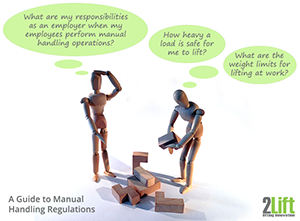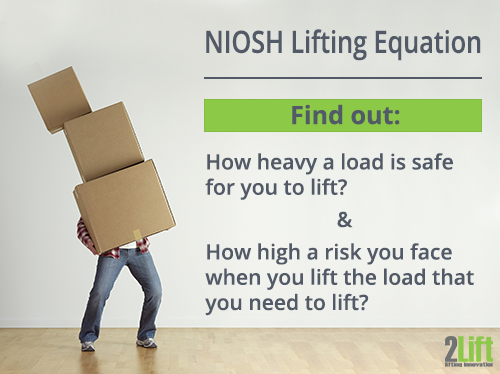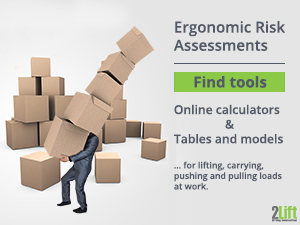Manual Handling Regulations and Ergonomic Risk Assessment Tools for Switzerland
Your guide to ergonomic risk assessment tools in Switzerland
Even though Switzerland is not part of the EU, they do bring many of their national laws in line with EU regulations. As far as we can see, this is also the case with their regulations on the manual handling of loads, which are very similar to those of most EU member states.
However, navigating through regulations and policies online can be difficult and confusing, which is why we have created this page.
This page is intended for employers (and other interested parties, of course) in Switzerland who are looking for user-friendly and easy-to-digest:
- Guidelines for healthy and correct lifting, holding, carrying, pushing and pulling methods.
- Ergonomic risk assessment tools for evaluating manual handling tasks in the workplace.
Thus on this page you will find, among things:
- A brief introduction of the relevant authorities in the political field of occupational safety and health (which includes that of manual handling), so you know who to go if you want more information and other material, than what is presented here.
- Links out to guides and manual handling risk assessment tools for lifting, holding, carrying, pushing and pulling - in both German, French and Italian
The Laws on and Authorities Responsible for Manual Handling in Switzerland
When it comes to the laws for occupational safety and health in Switzerland, there are two sets of laws to consider, the Labour Law and the Accident Insurance Law.
The Labour Law
The Labour Law covers all employment standards and basically deals with workers' rights, such as work hours, protection of health and personal integrity etc.
The Accident Insurance Law
In even fewer words, the Accident Insurance Law deals with work-related accidents and diseases.
The Federal Counsel
- The Supervisory 'Captain of the Ship'
When it comes to upholding the Accident Insurance Law (which is the law most relevant in this subject), we need to look at the Federal Counsel who essentially acts as the overall supervisory body protecting employees from occupational accidents and diseases.
This Federal Counsel supervises the activities of the central agency called the Federal Coordination Commission for Occupational
Safety (FCOS) / Eidgenössische Koordinationskommission für Arbeitssicherheit (EKAS) / Commission fédérale de coordination pour la sécurité au travail (CFST) / Commissione federale di coordinamento per la sicurezza sul lavoro (CFSL).
FCOS
- The Central Office Where all the Coordination Takes Place
FCOS acts like a central office with a controlling and coordinating function of the action orientated bodies mentioned in the next section.
Executive Organs: SUVA and SECO
- The 'Footmen' and Active 'Doers'
Thus 'below' the FCOS we have the 'executive organs', the ones that take action so to speak. Their jobs are to supervise the implementation of the various policies regarding safety and health at work by e.g. providing advice to and monitoring companies.
In other words, their overall job is to enforce the law.
These 'executive organs' consist of SUVA (the main accident insurance authority) and SECO (the State Secretariat of Economic Affairs) along with the cantons and specialist organizations.
Much of the material presented on this page, e.g. links to ergonomic guidelines and ergonomic risk assessment sheets for the manual handling of loads in Switzerland are created by SUVA.
Ergonomic Risk Assessment Tools for the Manual Handling of Loads for Employers
In Switzerland, like what is the case in many other European countries, the ergonomic guidelines for the manual handling of loads are of a preventive and protective nature. (See the Swiss guidelines in German, French and Italian.
In these ergonomic guidelines it is stated that:
- Manual handling of heavy loads should be kept to an absolute minimum.
- If manual handling of heavy loads needs to be performed, then the employer must take appropriate measures to ensure the safety and health of his workers.
- Workers must be informed of the weight of the loads and risks associated with their handling, and they must receive regular training in manual handling.
If workers are to manually lift heavy loads, Switzerland has established a set maximum values, that men and women may lift (under ideal circumstances).
 The maximum recommended weight (the load constant) to lift at work for men and women between 20 and 35 years of age:
The maximum recommended weight (the load constant) to lift at work for men and women between 20 and 35 years of age:
- 25 kg for men
- 15 kg for women
Being any older or younger than this (and when being pregnant), the weight should be reduced. You can see the ages and weight values in a table on this page (German), or on this page (Italian). Unfortunately we couldn't find a French version.
Also, if the manual handling tasks become more complex or strenuous, the weight of the load must also be reduced.
For instance, if heavy loads are to be carried more than four times per hour, the maximum weight to lift is reduced to:
- 12 kg for men
- 7 kg for women
For references, see:
Ergonomic Risk Assessment Sheets for Lifting, Holding and Carrying
In order to find out if your workers are engaged in high risk manual handling, SUVA has created an ergonomic risk assessment document (in German, in French, in Italian) which in English may be loosely translated as "Hazard Identification: The Lifting and Manual Transport of Loads"
In this document the risk associated with a certain manual handling task is determined on the basis of these variables:
- A temporal evaluation based on the type of handling situation: Lifting, holding or carrying.
- The weight of the load and whether you're male or female.
- The types and extents of postures you're going through during the handling situation.
- The degree of external limitations in the working area.
The document is fairly easy to fill out, but if you're in doubt, there are guidelines and an explanation. For instance, we had to read the explanation of the temporal evaluation several times to find out how to fill out the risk assessment sheet as we found it unclear that you had to choose between three types of handling scenarios. Fortunately an example of how to fill it out along with how to calculate the risk, is also included in the document, which is very helpful.
Here you have the Swiss ergonomic risk assessment sheets for lifting, holding and carrying in German, French and Italian ready for download:
Ergonomic Risk Assessment Sheets for Pushing and Pulling
If your workers are not lifting, but are instead pushing and / or pulling loads, SUVA has created another ergonomic risk assessment sheet (in German, French, Italian), for you to evaluate the amount of physical strain your workers may be subject to when pushing and pulling loads on wheels.
Loosely translated into English, this document is called "Pushing and Pulling Loads on Wheels. A Physical Stress Analysis."
For a company to get as precise an overall picture as possible, a sample of at least three workers' handling tasks has to be performed.
The number of variables to fill out in this sheet is more extensive that what was the case with the ergonomic risk assessment for lifting, and as far a we can see, there are no guidelines to read or examples to follow either, so it might be a bit more complicated to do than the other.
Here you have the Swiss risk assessment sheets for pushing and pulling in German, French and Italian ready for download:
Online Resources from SUVA on Manual Handling in Switzerland (in German, French and Italian)
 SUVA has quite an extensive palette of different online material regarding material handling. Here are a few links to documents that may be of interest:
SUVA has quite an extensive palette of different online material regarding material handling. Here are a few links to documents that may be of interest:
Manual Handling and Ergonomics in German
Manual Handling and Ergonomics in French
Manual Handling and Ergonomics in Italian
Information Disclaimer
We have done our very best to ensure the accuracy and reliability of the information presented on this page. However, we cannot guarantee the correctness of any information (regulations change from time to time, responsibilities change hands, etc.). Thus we cannot accept any responsibility or liability for the accuracy, content, completeness, legality, or reliability of the information provided here.
If, however, you are aware of any outdated or incorrect information on this page, you are very welcome to contact us, so we can bring our page up to date.
Other Pages on Manual Handling Regulations

Manual Handling Regulations Guide |

The NIOSH Lifting Equation |

Ergonomic Risk Assessment Tools |
Country Specific Pages with Ergonomic Guidelines and Risk Assessment Tools

UK |

Germany |

Austria |

France |

Ireland |

The Netherlands |

Denmark |

Sweden |

Spain |

Portugal |

Italy |

Switzerland |

Norway |

Canada |

Australia |
|
|
|